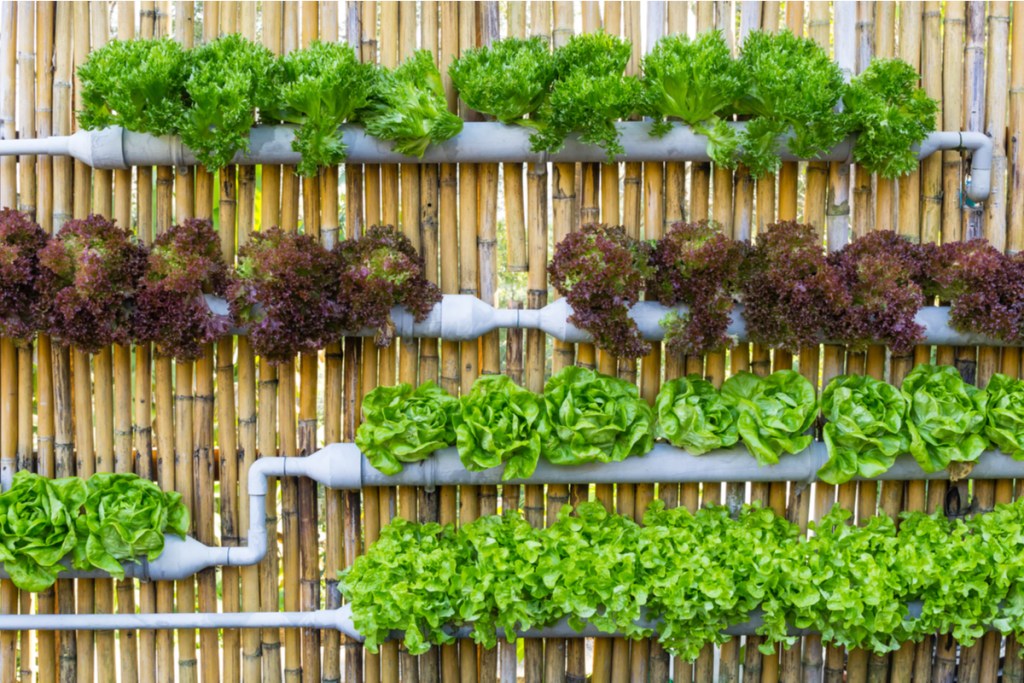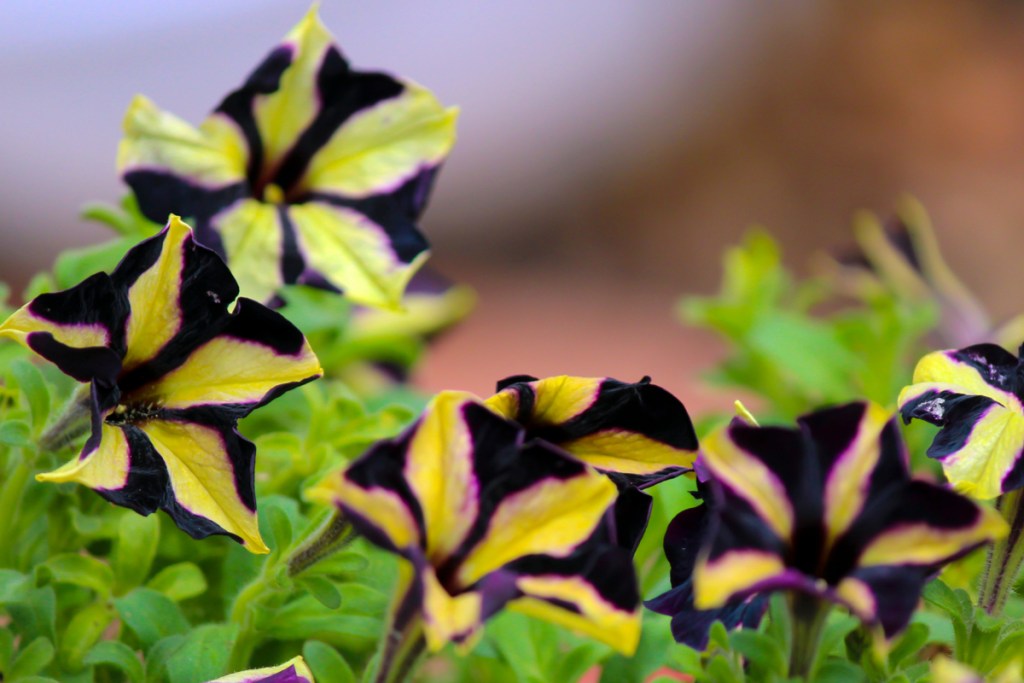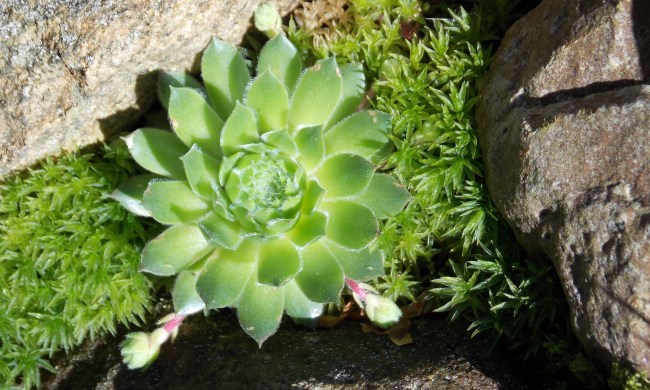Container gardening is a great way to bring plants indoors or grow them on a patio when you don’t have a lot of space for a full flowerbed. Aside from just terracotta and railing planters, though, people have been using gutters to grow flowers, herbs, succulents, you name it! Gutter gardens are a great vertical gardening option and add a unique edge to indoor and outdoor collections alike.
What is a gutter garden?
A gutter garden is exactly what it sounds like: container gardening done with rain gutters (not the ones that are already attached to your house). Gutter gardens are quite versatile, able to be displayed on walls, railings, fences—really anywhere you can think of that where it’d fit! Rain gutters allow for a lot more creativity than your standard terracotta pots. People use them to create hanging vertical gardens, to grow herbs near or outside their kitchen, to add a bit of a seasonal color pop, and even to have an indoor succulent garden.
The thing to keep in mind is that gutter garden plants don’t encompass every plant you can possibly grow. Some are better suited than others, and you’ll find that if you don’t get ones that are able to be properly grown in gutters, they won’t survive for too long or grow to the best of their ability.

How to start a gutter garden
Starting a gutter garden isn’t all that difficult. Because there are plenty of gutter garden plants and vegetables to choose from, the hardest part will probably be sourcing some rain gutters. If you want, you can buy them new. You can also call around to different locations and see if anyone has any that they aren’t using anymore that are still in relatively good condition.
Depending on how you’re setting up your gutter garden (hanging vs. on a railing vs. on a wall), you may need different materials. End caps will be important for any method you choose, as you’ll want something to close the open ends of the gutter to keep the dirt and plants in. You’ll also need a tool and safety glasses so you can trim the gutters to your desired length.
Gutter gardens that will be part of a vertical gardening setup will need to have small holes drilled for the wire to go through. Be sure to also drill some holes in the bottom so the gutter will have proper drainage. If you want, you can paint the gutters either with a solid color or a design that matches the rest of your gardening aesthetic.
Because every region has their own growing zone determined by the USDA, not all gutter garden plants and vegetables will be able to be grown in the same area. It’s best to stick with ones sold at local nurseries to be sure what you’re buying is strong enough to withstand your climate.
The best plants to grow in this type of garden
The best gutter garden plants and gutter garden vegetables are ones whose roots spread out as opposed to growing straight down. Succulents and herbs are great options because they can grow well in a shallow container. Rain gutters only have so much space, so often the plants, flowers, and vegetables you choose will be ones with root systems that don’t need a lot of depth. Mint and basil are great herbs to start with while snap peas and radishes make amazing gutter garden vegetables.
As far as flowers go, annuals that are marked as “mounding” varieties are ideal for gutter gardens! Perennials won’t grow back as easily when planted in a container, which works out because having annuals means you can switch up what’s in your gutter garden from year to year without having to pull much out. Here are a few plants to get you started.
Regal geraniums
Regal geraniums are an annual flower that aren’t actually geraniums at all. This gutter garden plant is part of the Pelargonium genus and sports pink, purple, red, or white blooms alongside thick leaves. They’re commonly known as annual or zonal geraniums and are a great option for a gutter garden or other type of hanging basket or container.
Light needs: Full sun to partial shade (bloom best in full sun)
Water needs: Let soil dry out between waterings, drought-tolerant
Soil needs: Well-draining, slightly acidic soil

Petunias
Petunias are a popular option for any garden bed or container because they come in such a wide array of colors and patterns. Most of the petunias you can find now are hybrids of some kind, but they all have the same trumpet-shaped flowers and branching leaves. Some varieties have single blooms, some double. Some are striped or veined while others can be solid or spotted. When picking out petunias for a gutter garden, you want to be sure to pick the ones marked for mounding as opposed to cascading.
Light needs: Full sun, mix in partial shade at the hottest points of the summer
Water needs: Water when top inch of soil is dry
Soil needs: Well-draining, light, fertile soil
Jade plants
If you’re turning your gutters into an indoor gutter garden, jade plants are a phenomenal option to include. These plants have oval-shaped leaves and stems that resemble trunks of trees. These plants can live to be 100 years old and grow anywhere from three to six feet tall, though they only grow a couple of inches each year. Because of their slow growth rate, you won’t have to worry about them outgrowing your gutter garden too quickly.
Light needs: Bright, indirect sun
Water needs: Water once every one to two weeks in the summer to keep soil moist but not soggy
Soil needs: Well-draining, succulent-specific potting mix
Pothos
Pothos plants are a very common, hardy houseplant that enjoy shallower pots, so why not put them in a gutter garden? As a gutter garden plant, you’ll be able to enjoy the vines the pothos grows whether it’s mounted on the wall, on a railing, or hanging by wire. The heart-shaped leaves can be found on every pothos variety, from the golden pothos to the marble queen, so you’ll be able to enjoy their signature foliage while picking out the variegation you like best.
Light needs: Bright, indirect light
Water needs: Let soil dry out completely between waterings
Soil needs: Well-draining soil
Gutter gardens are quite unique and a great way to repurpose something. The ability to paint the colors allows you to add a touch of uniqueness, and as long as you’re selective about which plants you include, you’ll find it can be quite a versatile gardening option for years to come.


